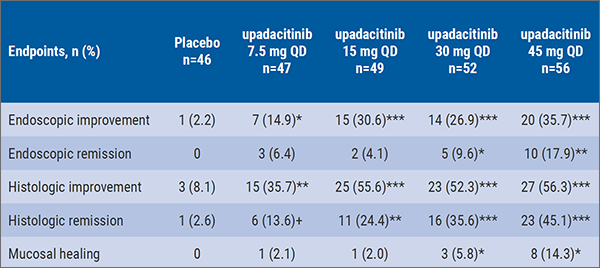"Previously, we and others had shown that stage of fibrosis on liver biopsy is a predictor of adverse clinical outcomes and PROs," Dr. Zobair Younossi of the Inova Health System in Falls Church, Virginia, told Reuters Health by email.
"Although liver biopsy to determine stage of liver fibrosis is important, it is associated with complications and cost, and is not well accepted by patients. In this context, developing accurate and validated NITs of fibrosis has become our priority in the field," he said.
"Some of these NITs are available - e.g., transient elastography, FIB-4, etc.," Dr. Younossi added. "Other tests, such as Enhanced Liver Fibrosis (ELF), are approved and available in Europe but not yet in the U.S. Once these tests become widely available, they can be used in clinical practice to risk stratify patients with NASH who are at risk for bad clinical and PROs."
The researchers analyzed data from four phase-2 and -3 clinical trials of simtuzumab and selonsertib. The trials, conducted in 27 countries combined, were terminated due to the lack of efficacy of the drugs before their respective planned completion dates at week 48 or 96.
All patients had a liver biopsy within six (for bridging fibrosis) or 12 (for cirrhosis) months prior to enrollment, the researchers note in Gastroenterology. Laboratory parameters were collected at baseline and during treatment, and were used to calculate commonly used NIT scores for fibrosis at baseline and treatment week 48.
PROs were collected as exploratory endpoints at the pre-treatment baseline visit and at treatment weeks 12, 24 and 48 from enrollees of two out of four included studies.
Altogether, 2,154 patients with advanced disease (NASH Clinical Research Network F3 or F4) were included. Forty percent of participants were men and 72% had type-2 diabetes. About half were in NASH CRN F4, with a baseline liver stiffness of 24.1 kPa and a mean ELF score of 11.4.
F3 participants had a baseline liver stiffness score of 14.6 kPa and a mean ELF score of 10.3.
The median follow-up was 16 months.
Of those with baseline F3, 16.7% experienced disease progression to cirrhosis, and those who progressed had higher baseline NITs; of those with F4, 7.3% experienced clinical events (39% ascites, 24% hepatic encephalopathy).
After adjustment, increases in NIT scores were significantly associated with increased risk of disease progression in both F3 and F4 groups: all NITs for F3, and ELF, NAFLD Fibrosis score, FIB-4 and liver stiffness for F4.
Higher NIT scores were also significantly associated with impairment in PROs, as demonstrated in ELF scores of 10.43 or more, NFS scores of 1.80 or more, Fibrotest scores of at least 0.54, and liver stiffness of at least 23.4 kPa.
During treatment, patients whose NIT scores decreased experienced improvement of their PRO scores, whereas those with increased NIT scores also had worse PRO scores.
Dr. Younossi said, "Future studies will be to validate this data in real-world practices using data from the Global NASH Registry."
Dr. Elena Ivanina, assistant program director of the gastroenterology fellowship at Lenox Hill Hospital in New York City, told Reuters Health by email that the study "provides a new perspective on the utility of NITs with regard to PROs."
The findings "justify the need to use these accessible and cost-effective scoring systems widely. These tests should certainly be used when applicable, as they have been shown to decrease the need for liver biopsy, in some studies, around 50%," added Dr. Ivanina, who was not involved in the analysis.
She observed, however, that the study "used methods that are not widely available in the U.S., like the ELF test, which even large transplant centers in the U.S. aren't using," and that the authors "only looked at advanced fibrosis, so the results are not generalizable to earlier stages of fibrosis."
Still, Dr. Ivanina concluded, "NIT fibrosis tests play an important role in the fibrosis staging of NASH and may significantly decrease the amount of liver biopsies that need to be performed. Clinicians should understand their role in the algorithm of a NASH fibrosis workup and still be mindful of their shortcomings, and when a liver biopsy is still necessary to perform."
The study was funded by Gilead Sciences. Dr. Younossi has received funds from the company
SOURCE: https://bit.ly/3p42cGJ Gastroenterology, online December 7, 2020.
By Marilynn Larkin
Posted on
Previous Article
« Little difference between molecular tests for refining thyroid-nodule diagnosis Next Article
COVID-19 far more deadly than seasonal flu, large study confirms »
« Little difference between molecular tests for refining thyroid-nodule diagnosis Next Article
COVID-19 far more deadly than seasonal flu, large study confirms »
Related Articles

December 1, 2022
Start low with brepocitinib and ritlecitinib in UC

May 9, 2019
Upadacitinib: data from U-ACHIEVE and CELEST
© 2024 Medicom Medical Publishers. All rights reserved. Terms and Conditions | Privacy Policy
HEAD OFFICE
Laarderhoogtweg 25
1101 EB Amsterdam
The Netherlands
T: +31 85 4012 560
E: publishers@medicom-publishers.com

